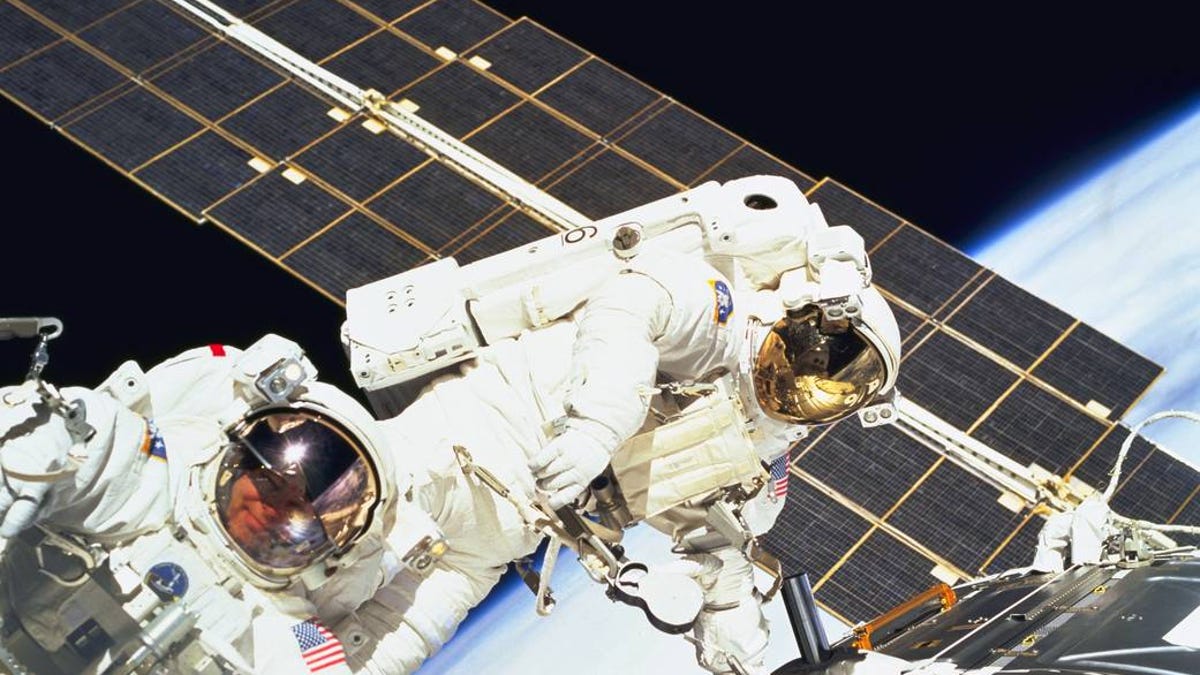Hello Kitty in space: Just another day in astronaut training
Evelyn Miralles, head of the VR Lab for the NASA Johnson Space Center, is using realistic simulations to train astronauts.

If she had climbed California's Half Dome in a virtual reality simulation first, Evelyn Miralles is pretty sure she wouldn't have balked when it was time to actually hike the high rock formation in Yosemite National Park.
Visualizing experiences through VR headsets is what Miralles, principal engineer and lead VR innovator for the Virtual Reality Laboratory and astronaut training facility at NASA, has been doing for over 20 years. She and her team of engineers have made VR helmets that help astronauts train for spacewalks, tour the International Space Station from the lab's Houston's offices, and simulate what it's like to make fixes in zero gravity while wearing a spacesuit.
It all started in the 1990s when the Hubble Space Telescope needed repairs. Miralles and her team created their first VR helmet in 1991 to train the astronauts for the mission. The engineers had crew members go through a real-time simulation so the astronauts had a sense of what it would be like to do their spacewalk and then control the robotic arm they would need to replace mirrors on the orbiting telescope.
"When they came back [from space], they said, 'you know, it looked just like the VRLab,'" Miralles said during a visit Friday to CNET's headquarters in San Francisco.
Following the positive response, the VRLab was able to get funding for future mission training and to develop even better VR helmets. With improved graphics and ergonomics, the head-mounted displays are now capable of simulating the smallest details, such as the location of cables and handrails in the space station. In the future, NASA is hoping it might be able to use commercial VR gear, including the new Oculus Rift headset and HTC's Vive, which has excellent tracking technology, Miralles says.
Whatever the gear ends up being, there's no question VR will keep playing a big role in training teams for space. With the tech, NASA can help astronauts become more confident, Miralles said.
In space, the crew members go through day and night, for instance. The headsets can be used to simulate a night mission, teaching them how to turn on their headlights and work in the dark.
"You feel like you are skydiving to the Earth," Miralles said, describing what it's like when the space station doors open and astronauts look out into the void toward our planet. "When they go out there, it's like you have been there, it's like you have seen it somehow and so you don't get as scared."
NASA also helps prepares astronauts for coping with unexpected problems, using VR simulations to surprise them. That's how Hello Kitty and other characters, including even virtual avatars of their teammates, may pop up unexpectedly. "They will be walking around doing their space walk and we will just pop an animal on the side."
The addition of other senses such as smell or touch could also push the current visual experience -- and the astronauts' training -- even further. Miralles' biggest hope is that they'll be able to have wireless headsets in the not so distant future.
"That's something I have always pushed for," Miralles said. "Wires detach and every time you pull, you know you are somewhere else."

